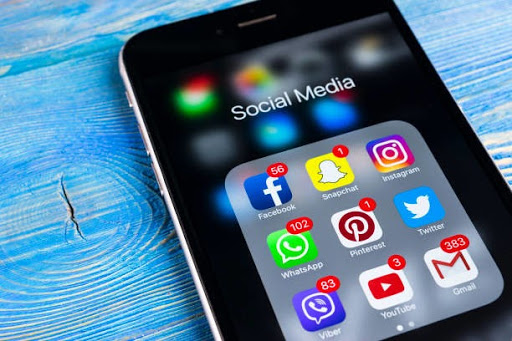Teenagers with social anxiety deal with a lot of extra stress but remote learning is lessening that stress and making things easier for these teens.
What is social anxiety disorder?
Social anxiety disorder (SAD) is a type of anxiety disorder that presents itself during or before social situations. Everyday activities such as talking in class, going to the grocery store, or calling someone causes extreme stress in a person with social anxiety. This stress disrupts people’s lives and prohibits them from activities that they would otherwise enjoy.
People with SAD have a variety of symptoms and characteristics, including:
- Nausea, blushing, sweating, trembling, a rapid heart rate, or feeling their “mind going blank.”
- Extremely self-conscious
- Fear of judgment
- Avoidance of crowded places
- Rigid posture, little eye contact, or quiet speaking voice
The exact cause of this type of anxiety is unknown, but researchers identified a few factors that may play a role. Some people inherit this disorder from their parents, which suggests that genetics impact who gets it. Underdeveloped social skills and misreading situations may also provoke an unsatisfactory social encounter and cause a fear of future confrontations.
These factors cause social anxiety in almost 7 percent of Americans. In a 2018 study by the Child Mind Institute, results revealed that social anxiety impacts 9.1 percent of teenagers. Without treatment, these people will deal with this disorder for years or an entire lifetime.
What is high school like for teenagers with social anxiety?
Every day, some people wake up and have to deal with the added stress of social anxiety. This stress is even worse for teenagers but most of the people today don’t even think about how hard it is for them.
High school is already difficult for students, but it is tougher for those with social anxiety. Each school day includes stress about things that most people don’t even worry about. Stuff like who to sit with at lunch, asking the teacher a question, or having to pick a partner in class, can be terrifying and nerve-racking for students with SAD.
A large part of this stress comes from a smaller than average friend group. This predicament is unfortunate because people with SAD need more support than the average person, and they aren’t getting it. Panic attacks and stress-related breakdowns are common with this group, but often there is no one to help calm them down afterward. Parents can’t always be there, and these teens’ poor social skills prevent them from making many friends. Without more people in their support group, the panic attacks breakdowns are likely to get worse.
“I do have friends just not as many as I would like and it is hard for me when my schedule doesn’t align with theirs,” said April (name changed for privacy) via text.
Even if these high schoolers did not have to worry about friends, school would still be stressful. Achieving good grades and understanding the material proves problematic for these socially anxious teens. Asking questions and securing extra help requires interacting with teachers, which is stressful.
“There are times when I am too scared to ask for help,” wrote April.
Other students, teachers, and classes each cause apprehension, but together they can be overwhelming for students with SAD.
What does remote learning mean for them?
Much of Leesville’s student body dislikes remote learning because of the decreased amount of social interaction. During a typical school year, students would hang out and talk with each other during sporting events, lunch, and before class. Due to remote learning, high schoolers no longer have these times to interact with each other.
Teenagers impacted by SAD enjoy online school because of the limited amount of time for talking. Presentations, answering questions, and just talking with other students is troublesome for people who have social anxiety. Being online limits that stress and helps these students feel more comfortable in class.
“I get really nervous talking to people so this whole online school thing really works for me,” wrote April.
SAD has a variety of physical symptoms associated with it (mentioned earlier), and any of these symptoms could ruin a person’s day. By turning off their cameras and using the chat students do not have to show their faces or talk during class. This way teens can keep others from seeing the physical manifestation of their illness.
“If it is a really bad day I can just turn my camera off,” wrote April.
Teens like April are doing better in classes this year because they feel more relaxed in Google Meets. Now, if they have a question, they can type it in the chat instead of raising their hand and talking in front of the other students. Being able to ask more questions increases comprehension, which in turn increases grades.
“I feel more confident this year and my grades are way better than before,” wrote April.
Remote learning may have some long term effects on socially anxious students. By showing teens what online school looks like, more and more of them are finding out that they actually like it. If high schoolers can learn this way, then there are more affordable options for college available to them, such as distance learning.
Social anxiety disorder is a type of anxiety that impacts many teens in the local community. High school is often difficult for these teens, but remote learning might offer a solution that they never thought of, online school.

Hi! My name is Savannah and I am a staff writer for The Mycenaean. I have been in Girl Scouts for 12 years and I am currently interning with Buffett and Beyond.

Leave a Reply